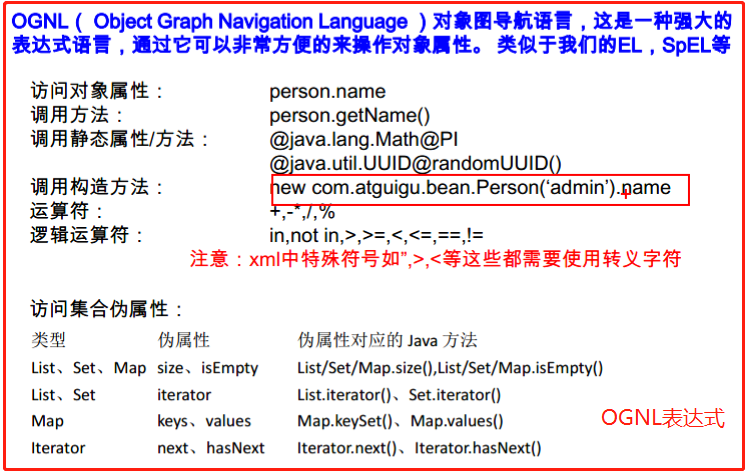if:判断
choose(when,otherwise):分支选择,类似java中的switch-case
如果带了id就用id查,如果带了lastName就用lastName查;只会进入其中一个
trim:字符串截取(where(封装查询条件),set(封装修改条件))
foreach
一、使用if

查询的时候,如果某些条件没带可能sql拼装会有问题
1、给where后面加上1=1 ,以后的条件都and xxx;
2、MyBatis使用where标签来将所有的查询条件包括在内。MyBatis就会将where标签中拼装的sql,多出来的and或者or去掉。(只会去掉第一个多出来的and或者or),and或者or都放在左边。
//携带了哪个字段查询条件就带上这个字段的值 public List<Employee> getEmpsByConditionIf(Employee employee);
<!--查询员工,要求:携带了哪个字段查询条件就带上这个字段的值--> <select id="getEmpsByConditionIf" resultType="emp"> select * from tbl_employee <where> <!-- test:判断表达式(OGNL) OGNL的使用参照官方文档或者百度 从参数中取值进行判断 遇见特殊符号应该写转义字符; --> <if test="id!=null"> id=#{id} </if> <if test="lastName!=null and lastName!=''"> and last_name like #{lastName} </if> <if test="email!=null and email.trim()!=''"> and email=#{email} </if> <!--OGNL会进行字符串与数字的转换判断--> <if test="gender==0 or gender==1"> and gender=#{gender} </if> </where> </select>
二、使用trim(不常用)
public List<Employee> getEmpsByConditionTrim(Employee employee);
<select id="getEmpsByConditionTrim" resultType="emp"> select * from tbl_employee <!-- 后边多出的and或者or,where标签不能解决 prefix="":前缀:trim标签体中是整个字符串拼串后的结果。prefix给拼串后的整个字符串加一个前缀 prefixOverrides="":前缀覆盖:去掉整个字符串前面的多余的字符 suffix="":后缀:suffix给拼串后的整个字符串加一个后缀 suffixOverrides=""后缀覆盖:去掉整个字符串后面的多余的字符 --> <trim prefix="where" suffixOverrides="and"> <if test="id!=null"> id=#{id} and </if> <if test="lastName!=null and lastName!=''"> last_name like #{lastName} and </if> <if test="email!=null and email.trim()!=''"> email=#{email} and </if> <if test="gender==0 or gender==1"> gender=#{gender} </if> </trim> </select>
三、使用choose
public List<Employee> getEmpsByConditionChoose(Employee employee);
<select id="getEmpsByConditionChoose" resultType="emp"> select * from tbl_employee <where> <!-- 如果带了id就用id查,如果带了lastName就用lastName查;只会进入其中一个 --> <choose> <!--如果--> <when test="id!=null"> id=#{id} </when> <when test="lastName!=null and lastName!=''"> last_name like #{lastName} </when> <when test="email!=null"> email=#{email} </when> <!--否则--> <otherwise> gender=0 </otherwise> </choose> </where> </select>
四、set
set标签:更改员工信息时,不需要把所有数据重写一遍,只需要传需要修改的值就可以,其他值不会修改。
public void updateEmp(Employee employee);
<update id="updateEmp"> update tbl_employee <!-- set标签取出多余的逗号 --> <set> <if test="lastName!=null"> last_name=#{lastName}, </if> <if test="email!=null"> email=#{email}, </if> <if test="gender!=null"> gender=#{gender} </if> </set> where id= #{id} </update>
使用trim标签:去除多余的逗号
<update id="updateEmp"> update tbl_employee <trim prefix="set" suffixOverrides=","> <if test="lastName!=null"> last_name=#{lastName}, </if> <if test="email!=null"> email=#{email}, </if> <if test="gender!=null"> gender=#{gender} </if> </trim> where id= #{id} </update>
五、使用foreach
接口代码:
public List<Employee> getEmpsbyCondtionForeach(List<Integer> ids);
xml代码:
<!--多个id查询信息===id in (1,2,3)--> <select id="getEmpsbyCondtionForeach" resultType="emp"> select * from tbl_employee where id in <!-- collection:指定要遍历的集合: list类型的参数会特殊处理封装在map中,map的key就是list item:将当前遍历出的元素赋值给指定的变量 separator:每个元素之间的分隔符 open:遍历出所有结果拼接一个开始的字符 close:遍历出所有结果拼接一个结束的字符 index:索引。遍历list的时候是index就是索引,item就是当前值 遍历map时index表示的就是map的key,item就是map的值 #{变量名}就能取出变量值,也就是当前遍历出的元素 --> <foreach collection="list" item="item_id" separator="," open="(" close=")"> #{item_id} </foreach> </select>
六、批量保存
数据库SQL:
/*批量保存*/
INSERT INTO tbl_employee(last_name,email,gender,d_id)
VALUES('Krystal','[email protected]','0',1),('Henry','[email protected]','1',2);
接口代码:
扫描二维码关注公众号,回复:
7954708 查看本文章


public void addEmps(@Param("emps") List<Employee> emps);
xml代码:
<!--批量保存--> <!--MySQL下批量保存:可以foreach遍历 mysql支持(),(),()语法--> <insert id="addEmps"> <!--批量保存XJS--> INSERT INTO tbl_employee(last_name,email,gender,d_id) VALUES <foreach collection="emps" item="emp" separator=","> (#{emp.lastName},#{emp.email},#{emp.gender},#{emp.dept.id}) </foreach> </insert><!--推荐使用-->
或者
需要在数据库的配置文件的url后面添上参数:
allowMultiQueries:在一条语句中,允许使用 “;”来分隔多条查询(真/假,默认值为“假”)
设置为true
这种分号分隔多个SQL可以用于其他的批量操作(删除,修改)
jdbc.url = jdbc:mysql://localhost:3306/mybatis_sgg?allowMultiQueries=true
<!--这种方式需要数据库连接属性allowMultiQueries=true--> <insert id="addEmps"> <foreach collection="emps" item="emp" separator=";"> INSERT INTO tbl_employee(last_name,email,gender,d_id) VALUES (#{emp.lastName},#{emp.email},#{emp.gender},#{emp.dept.id}) </foreach> </insert>